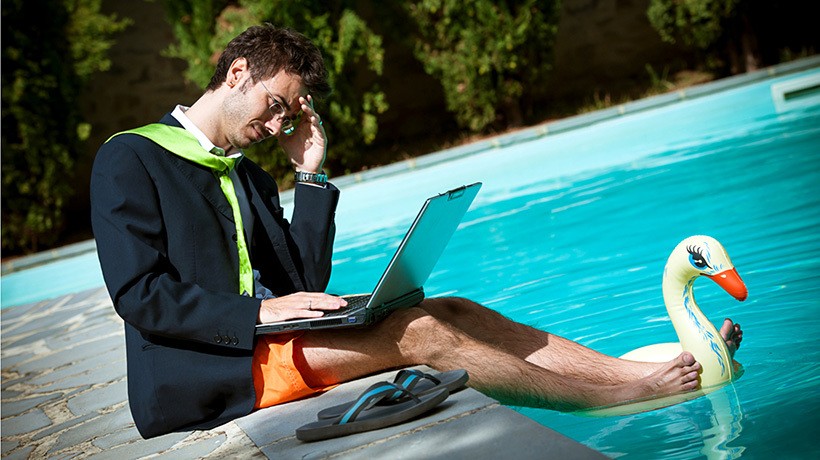Learning Sometimes Takes Practice
An imaginary screenplay...
Where we face the false promise of quick "microlearning in the flow" without any effort.
EXT. Scope Creep Creek Swimming Pool -- Day
A hands-on swim coach stands in the pool, helping kids practicing the right moves. A mother drags along his skinny teenage son to the pool. She keeps her distance from any splash.
Mother: Are you the coach?
Swim Coach: Yes, M'am. I am.
Mother: Good! So, you're an expert at how to teach kids to swim?
Swim Coach: I'm doing my best...
Mother: I need my son to learn how to swim.
Swim Coach: Perfect place to be.
(to the Son, smiling)
Hi, I'm Coach. What's your name?
Mother: Do you need to know his name in order to teach him to swim?
Swim Coach: Well, I usually like to know a little bit about my audience...
Mother: Elmo!
Swim Coach: Elmo is his name?
Mother: No. Elmo stands for: enough, let's move on! How long does it take usually? To learn to swim?
Swim Coach: It depends on how you measure...
Mother: You don't seem to be an expert at this thing.
Swim Coach: It depends on prior skills and...
Mother: Not even a bath.
Swim Coach: No problem. Usually, twice a week, for four weeks is a good base...
Mother: No, no, no! We're going on a river cruise, and he needs to be able to swim by then.
Swim Coach: Okay. When is the trip?
Mother: We're actually on the way there. I heard about this thing: microlearning. Can you do that for 15 minutes?
Swim Coach: Wow. Then let's hop in and maybe we can work on some survival basics?
Mother: Hop in where?
Swim Coach: Into the water.
Mother: No, no, no! I don't want him to get wet.
Swim Coach: Then how do you want me to teach him to swim?
Mother: It feels like I'm not getting the value for my money here. I was thinking of a show-me, test-me micro approach. You would swim a couple of laps, commenting on what you're doing, and then my son would answer 5 multiple choice questions. Or do you have a free tip-sheet? Only if laminated!
Debrief
Of course, this story is not real. It is an excerpt from my absolutely fictitious book, Engage the WORL&D!. However, I'm sure you can relate to the message of the story. Microlearning and the phrase "learning in the flow" are hot topics in L&D. The concept is promising: learn as you go. It describes learning that happens while you're working without becoming a "learner" somewhere for a long and boring event. You stay in the flow of work, therefore there's no time wasted.
What about learning to swim then? Should we have a new concept of drowning in the flow? Learning is not ONE thing. Let's not use one concept, one model, one delivery method, one authoring tool, one VR/AR, one flow, one shiny thing for everything learning. Let's rise above the pressure (of water), come up for air, and do what we, learning designers should be doing: designing the best conditions for learning (and maybe performing) in the context of our own environment.
Call To Action
Let's not fall into the trap of not giving people time to learn anymore because they just look up things in the flow, watch a video, or take a three-minute microlearning. Let's not forget about feedback in learning. Feedback is one of the most valuable aspect of learning as it provides personal motivation and error correction. It's not generic, it is about your actions and decisions that you personally made. Let's not forget about practice! Practice is the application of knowledge. Without practice we might have false illusion of knowledge.
Spaced repetition is a proven method of effective learning design. [1] And that's exactly where learning in the flow should focus on: not reducing time overall to produce miracle skills but expanding the overall time both time and space. As close as you get to the application of knowledge and feedback of application both in time and space, the more successful outcome you can expect.
Conclusion
As a conclusion, do not think of learning in the flow as a method to reduce time to learn, and therefore to increase productivity. Think of it as a method to expand learning through time and space close to the application as possible in both dimensions. So, when you learn how to swim it includes spaced and well-timed repetition. Laminated cheat sheets do not always work.
References:
[1] The effect of spacing repetitions on the recognition memory of young children and adults
